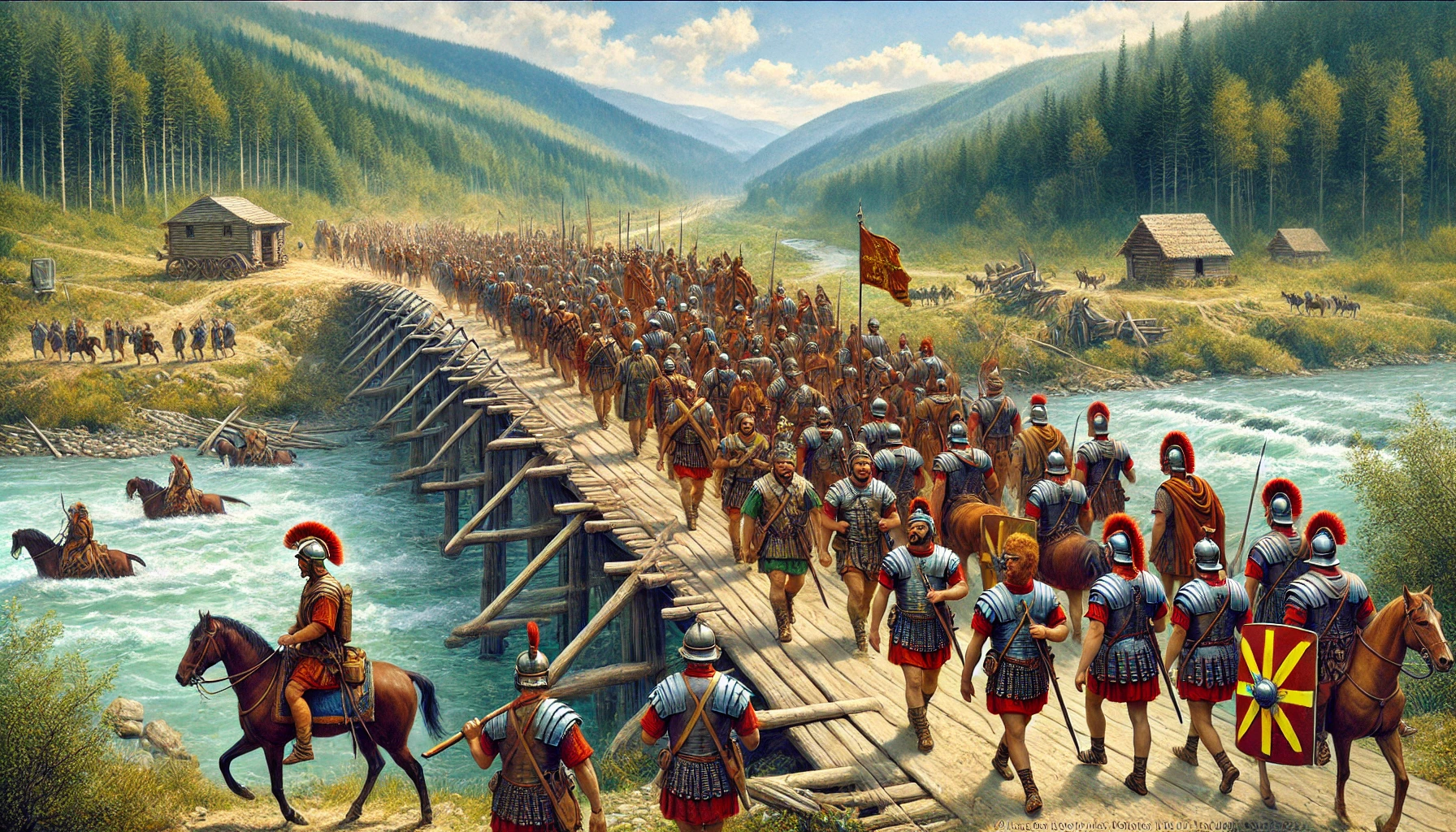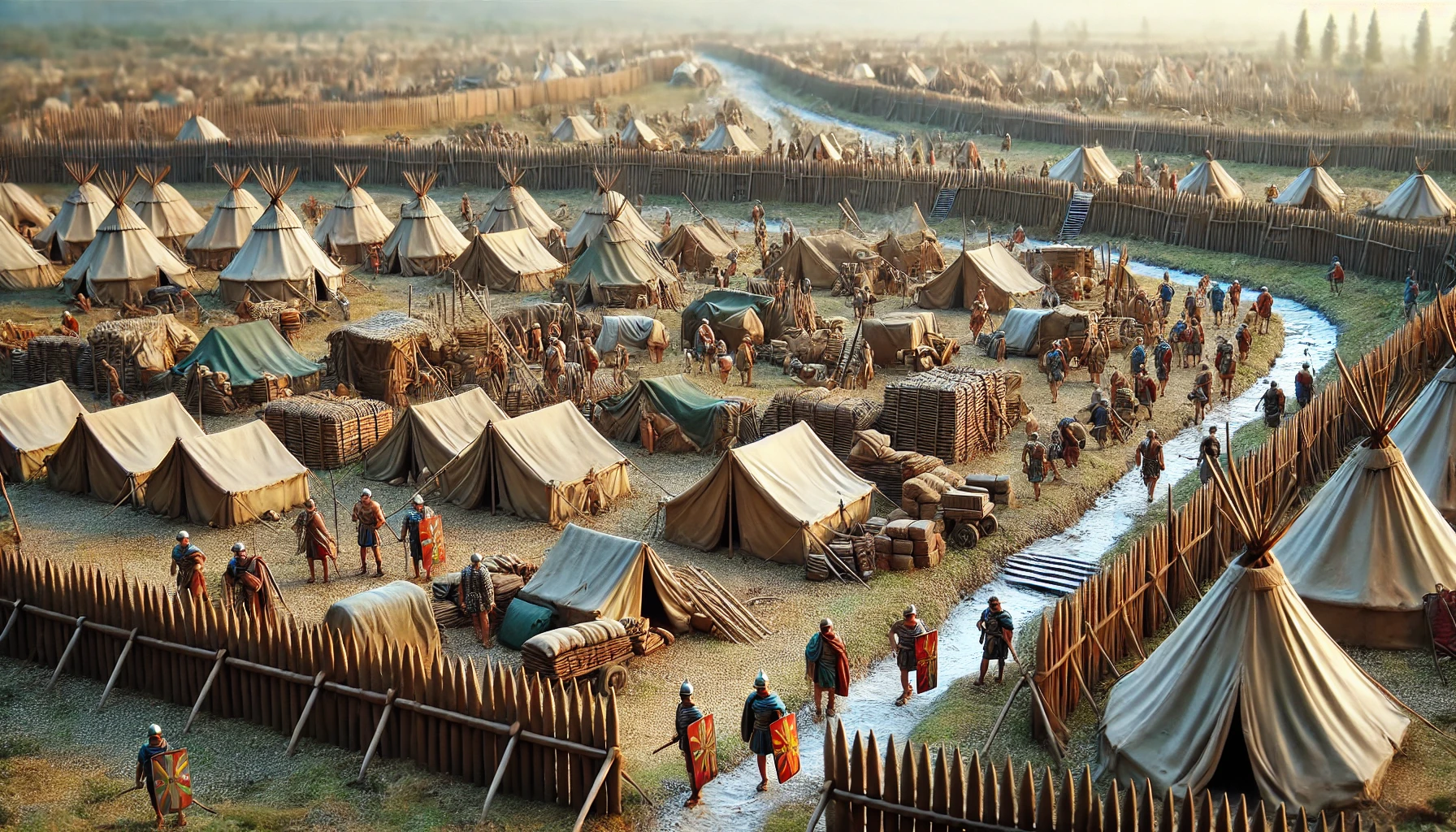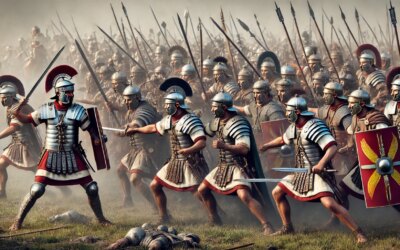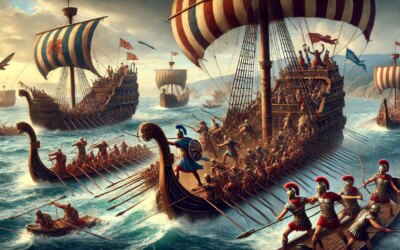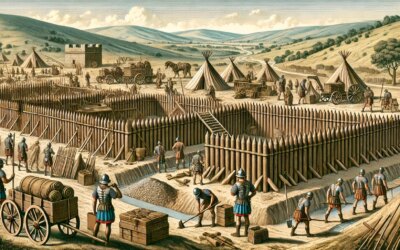Rome’s Ambition Reaches the Danube
In the spring of 101 AD, under the command of Emperor Trajan, the Roman army launched one of its most ambitious military operations of the 2nd century: the invasion of the Dacian Kingdom across the Danube River. This marked the beginning of the First Dacian War (101–102 AD), a conflict that would test Rome’s engineering prowess, logistical endurance, and military precision. The campaign began with a dramatic and well-documented feat—Trajan’s forces crossing the Danube into enemy territory via a hastily constructed but expertly engineered bridge of boats and pontoons, a demonstration of Roman ingenuity and imperial resolve.
The Dacian Threat
Dacia, located in what is now modern-day Romania, had long been a thorn in Rome’s side. Its warrior-king, Decebalus, had already humiliated Roman forces under Emperor Domitian in the late 1st century. Although he accepted a nominal peace, Decebalus continued to consolidate power, fortify his kingdom, and encourage revolts among Rome’s border tribes. By the time Trajan ascended the throne in 98 AD, Rome was ready to settle the score permanently.
Trajan’s Preparations and Strategic Objectives
Trajan, a soldier-emperor by nature, spent the early years of his reign reorganizing Rome’s frontier defenses along the Danube. He established castra (military forts) and supply depots in Moesia, ensuring a steady logistics chain. According to the historian Cassius Dio, Trajan planned to crush Dacian resistance swiftly and annex the territory into the Roman fold—an objective that would require cutting through mountain terrain and defeating a well-entrenched enemy force.
Crossing the Danube: Engineering and Logistics
The Danube presented a natural barrier between the Roman province of Moesia and Dacian lands. In 101 AD, Trajan’s engineers built a temporary bridge—likely composed of pontoons, rafts, and anchored platforms—across which the legions, cavalry, and supply carts marched. The operation was timed with precision to avoid the spring flood and was protected by advance scouts and artillery placements on both riverbanks. The spectacle of thousands of Roman troops moving in unison across the river demonstrated not just might, but organizational supremacy.
This engineering feat prefigured the later construction of Trajan’s permanent bridge by Apollodorus of Damascus, completed in 105 AD—an architectural marvel that remained the world’s longest arched bridge for over a millennium.
The March into Dacia and Initial Engagements
Once across, Trajan’s legions advanced through the Carpathian foothills. The Dacians employed guerrilla tactics, using the forests and highlands to ambush Roman patrols. However, Rome’s discipline and use of fortified marching camps allowed them to maintain cohesion. The key engagements of the first campaign culminated in the siege of key Dacian strongholds, including the citadel at Tapae. Although the Dacians fought fiercely, they were ultimately forced to retreat deeper into the mountains.
Outcomes of the First Campaign
By late 102 AD, Decebalus sued for peace. While he remained king, he was stripped of weapons, military advisors, and the right to harbor fugitives from Rome. The campaign was a success but incomplete—Rome had imposed terms but not secured lasting control. Nevertheless, the prestige of the Danube crossing and Trajan’s firm leadership bolstered his standing in the Senate and among the people.
Legacy of the Danube Campaign
The 101 AD Danube crossing symbolized a pivotal moment in Rome’s eastern expansion. It demonstrated the empire’s capacity to mobilize across difficult terrain, deploy rapid infrastructure, and sustain multi-year campaigns far from Italy. This military momentum would culminate in the final conquest of Dacia in 106 AD and the creation of the province of Dacia—rich in gold mines and strategic position.
Echoes in Art and Architecture
The memory of Trajan’s Danube campaign was immortalized in the bas-reliefs of Trajan’s Column in Rome, completed in 113 AD. The column’s spiraling frieze includes vivid depictions of the bridge crossing, river engineering, and imperial leadership—serving both as propaganda and historical record. The crossing became emblematic of Rome’s ability to conquer nature as well as nations.
Conclusion: Where Engineering Meets Empire
Trajan’s 101 AD campaign across the Danube stands as a masterclass in Roman military engineering, strategic vision, and imperial ambition. It was not merely a crossing of water—it was the opening of a new frontier, both geographical and symbolic, as Rome pushed the boundaries of its dominion into the heart of Europe. The legacy of that crossing, and the emperor who led it, endures as a testament to the calculated boldness of Rome at its height.

